Serial Prefrontal Pathways Are Positioned to Balance Cognition and Emotion in Primates
- PMID: 32989097
- PMCID: PMC7577604
- DOI: 10.1523/JNEUROSCI.0860-20.2020
Serial Prefrontal Pathways Are Positioned to Balance Cognition and Emotion in Primates
Abstract
The delicate balance among primate prefrontal networks is necessary for homeostasis and behavioral flexibility. Dorsolateral prefrontal cortex (dlPFC) is associated with cognition, while the most ventromedial subgenual cingulate area 25 (A25) is associated with emotion and emotional expression. Yet A25 is weakly connected with dlPFC, and it is unknown how the two regions communicate. In rhesus monkeys of both sexes, we investigated how these functionally distinct areas may interact through pregenual anterior cingulate area 32 (A32), which is strongly connected with both. We found that dlPFC innervated the deep layers of A32, while A32 innervated all layers of A25, mostly targeting spines of excitatory neurons. Approximately 20% of A32 terminations formed synapses on inhibitory neurons in A25, notably the powerful parvalbumin inhibitory neurons in the deep layers, and the disinhibitory calretinin neurons in the superficial layers. By innervating distinct inhibitory microenvironments in laminar compartments, A32 is positioned to tune activity in columns of A25. The circuitry of the sequential pathway indicates that when dlPFC is engaged, A32 can dampen A25 output through the parvalbumin inhibitory microsystem in the deep layers of A25. A32 thus may flexibly recruit or reduce activity in A25 to maintain emotional equilibrium, a process that is disrupted in depression. Moreover, pyramidal neurons in A25 had a heightened density of NMDARs, which are the targets of novel rapid-acting antidepressants. Pharmacologic antagonism of NMDARs in patients with depression may reduce excitability in A25, mimicking the effects of the neurotypical serial pathway identified here.SIGNIFICANCE STATEMENT The anterior cingulate is a critical hub in prefrontal networks through connections with functionally distinct areas. Dorsolateral and polar prefrontal areas that are associated with complex cognition are connected with the anterior cingulate in a pattern that allows them to indirectly control downstream activity from the anterior cingulate to the subgenual cingulate, which is associated with heightened activity and negative affect in depression. This set of pathways provides a circuit mechanism for emotional regulation, with the anterior cingulate playing a balancing role for integration of cognitive and emotional processes. Disruption of these pathways may perturb network function and the ability to regulate cognitive and affective processes based on context.
Keywords: anterior cingulate; depression; dlPFC; inhibitory neurons; laminar connections; subgenual cingulate.
Copyright © 2020 the authors.
Figures
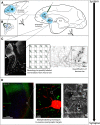



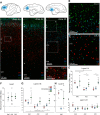
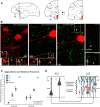
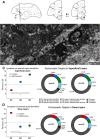

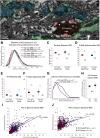


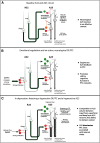
Similar articles
-
Cortical Connections Position Primate Area 25 as a Keystone for Interoception, Emotion, and Memory.J Neurosci. 2018 Feb 14;38(7):1677-1698. doi: 10.1523/JNEUROSCI.2363-17.2017. Epub 2018 Jan 22. J Neurosci. 2018. PMID: 29358365 Free PMC article.
-
Subgenual and Hippocampal Pathways in Amygdala Are Set to Balance Affect and Context Processing.J Neurosci. 2023 Apr 26;43(17):3061-3080. doi: 10.1523/JNEUROSCI.2066-22.2023. Epub 2023 Mar 28. J Neurosci. 2023. PMID: 36977583 Free PMC article.
-
Pathways for Contextual Memory: The Primate Hippocampal Pathway to Anterior Cingulate Cortex.Cereb Cortex. 2021 Feb 5;31(3):1807-1826. doi: 10.1093/cercor/bhaa333. Cereb Cortex. 2021. PMID: 33207365 Free PMC article.
-
Connections underlying the synthesis of cognition, memory, and emotion in primate prefrontal cortices.Brain Res Bull. 2000 Jul 15;52(5):319-30. doi: 10.1016/s0361-9230(99)00245-2. Brain Res Bull. 2000. PMID: 10922509 Review.
-
Neural Circuitry of Impaired Emotion Regulation in Substance Use Disorders.Am J Psychiatry. 2016 Apr 1;173(4):344-61. doi: 10.1176/appi.ajp.2015.15060710. Epub 2016 Jan 15. Am J Psychiatry. 2016. PMID: 26771738 Free PMC article. Review.
Cited by
-
Pathophysiology in cortico-amygdala circuits and excessive aversion processing: the role of oligodendrocytes and myelination.Brain Commun. 2024 Apr 18;6(3):fcae140. doi: 10.1093/braincomms/fcae140. eCollection 2024. Brain Commun. 2024. PMID: 38712320 Free PMC article. Review.
-
Task-induced deactivation dysfunction during reward processing is associated with low self-esteem in a possible subtype of major depression.Brain Behav. 2024 Jun;14(6):e3545. doi: 10.1002/brb3.3545. Brain Behav. 2024. PMID: 38873863 Free PMC article.
-
Cortical circuit principles predict patterns of trauma induced tauopathy in humans.bioRxiv [Preprint]. 2024 May 5:2024.05.02.592271. doi: 10.1101/2024.05.02.592271. bioRxiv. 2024. Update in: Cereb Cortex. 2025 Aug 01;35(8):bhaf209. doi: 10.1093/cercor/bhaf209. PMID: 38746103 Free PMC article. Updated. Preprint.
-
Scientific rationale for the use of α2A-adrenoceptor agonists in treating neuroinflammatory cognitive disorders.Mol Psychiatry. 2023 Nov;28(11):4540-4552. doi: 10.1038/s41380-023-02057-4. Epub 2023 Apr 7. Mol Psychiatry. 2023. PMID: 37029295 Free PMC article. Review.
-
Neuromodulation of prefrontal cortex cognitive function in primates: the powerful roles of monoamines and acetylcholine.Neuropsychopharmacology. 2022 Jan;47(1):309-328. doi: 10.1038/s41386-021-01100-8. Epub 2021 Jul 26. Neuropsychopharmacology. 2022. PMID: 34312496 Free PMC article. Review.
References
-
- Alexander L, Gaskin PL, Sawiak SJ, Fryer TD, Hong YT, Cockcroft GJ, Clarke HF, Roberts AC (2019b) Fractionating blunted reward processing characteristic of anhedonia by over-activating primate subgenual anterior cingulate cortex. Neuron 101:307–320.e306. 10.1016/j.neuron.2018.11.021 - DOI - PMC - PubMed
Publication types
MeSH terms
Substances
Grants and funding
LinkOut - more resources
Full Text Sources
